25 Contemporary Artworks You Can't Afford to Overlook
- 1. Andy Warhol, 1962, Campbell's Soup Cans
- 2. Louise Bourgeois, 1990, Maman
- 3. Jackson Pollock, 1950, Autumn Rhythm
- 4. Njideka Akunyili Crosby, 2015, I Still Face You
- 5. Damien Hirst, 1991, The Physical Impossibility of Death in the Mind of Someone Living
- 6. Cecily Brown, 1998, The Girl Who Had Everything
- 7. Yayoi Kusama, 1965, Infinity Mirror Room
- 8. Keith Haring, 1982, Untitled
- 9. Jean-Michel Basquiat, 1981, Untitled
- 10. Jenny Saville, 1992, Propped
- 11. Banksy, 2002, Girl with Balloon
- 12. Tracey Emin, 1998, My Bed
- 13. Roy Lichtenstein, 1961, Look Mickey
- 14. Takashi Murakami, 2002, Flower Ball
- 15. David Hockney, 1972, Portrait of an Artist (Pool with Two Figures)
- 16. Dorothea Tanning, 1984, Door 84
- 17. Jeff Koons, 1994, Balloon Dogs
- 18. Marc Chagall, 1964, ceiling of Paris Opéra Garnier
- 19. Frida Kahlo, 1948, Self Portrait
- 20. Lucian Freud, 1985, Reflection
- 21. Sophie Calle, 2007, Prenez soin de vous
- 22. Antony Gormley, 1998, Angel of the North
- 23. Ai Weiwei, 2009, Remembering
- 24. Francis Bacon, 1969, Three Studies of Lucian Freud
- 25. Mark Rothko, 1961, Orange, Red, Yellow
- Ready to Explore More Contemporary Art?
Contemporary art broadly covers the period from post-war times through today. This one comprises various styles, genres, and creative approaches— therefore, it is challenging to grasp fully.
This is where Artsper steps in to help. Today, we'll break down 25 key modern pieces of art so you can completely comprehend this creative era.
1. Andy Warhol, 1962, Campbell's Soup Cans
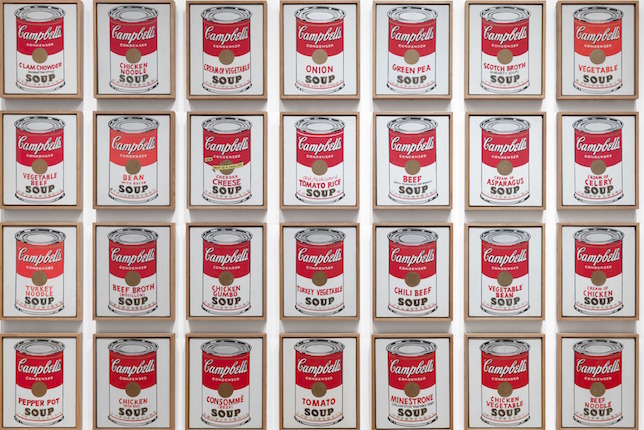
Andy Warhol, Campbell’s Soup Cans, 1962
A famous piece titled "Campbell's Soup Cans" was crafted by the esteemed artist Andy Warhol. As part of the movement known as Pop Art, this work reflects on how Americans enjoy consumption and watching plenty of television.
When you study it closely, you'll see Warhol's unique painting style. He consistently draws the same image to symbolize how our society is ceaselessly manufacturing and procuring items.
2. Louise Bourgeois, 1990, Maman
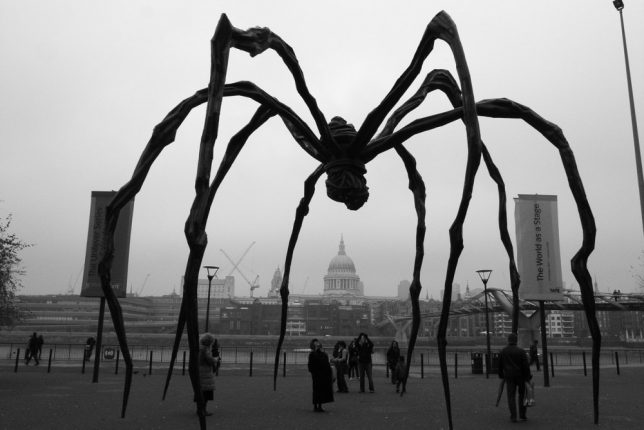 Louise Bourgeois, Maman, 1990
Louise Bourgeois, Maman, 1990
Maman is an iconic artwork by Bourgeois — think of a colossal spider sculpture that is 30 meters tall. Bourgeois created this giant spider for an exhibition at the Tate Modern. She made multiple variations of this piece using all kinds of materials.
According to Bourgeois, she created the 'Maman' as a tribute to her mother, who passed away when she was only 21.
3. Jackson Pollock, 1950, Autumn Rhythm
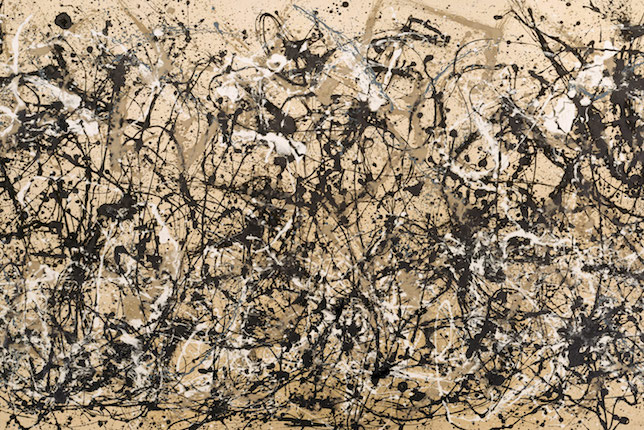 Jackson Pollock, Autumn Rhythm, 1950
Jackson Pollock, Autumn Rhythm, 1950
When Jackson Pollock was at the top of his game as an artist, he produced this piece, "Autumn Rhythm." It's the ideal illustration of a skill he's known for —drip painting.
Pollock stood out because he approached things in his own unique way. He would stand over his canvas and watch as runny paint spontaneously dripped and spattered across it.
He would also pour and scrape paint. For him, the movement and the actual colors were everything. This way of painting became his trademark style of painting.
4. Njideka Akunyili Crosby, 2015, I Still Face You
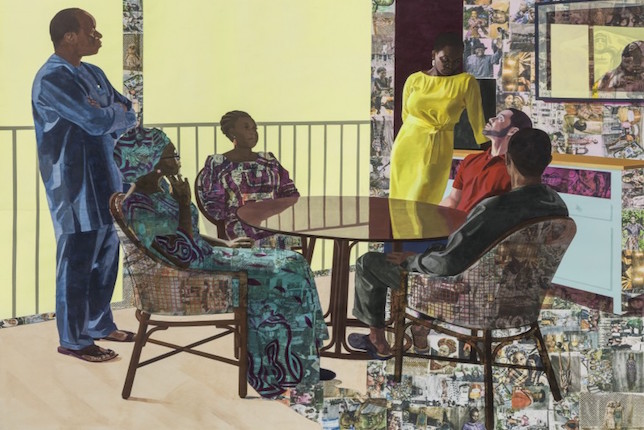 Nijdeka Akunyili Crosby, I Still Face You, 2015
Nijdeka Akunyili Crosby, I Still Face You, 2015
Meet the youthful and vivacious artist Njideka Akunyili Crosby. In her vibrant modern artworks, she combines the two cultural worlds. She was born and raised in Nigeria but immigrated to the United States at age 16. She now resides and works as an artist in Los Angeles.
Her profoundly personal works blend her many ethnic influences with "traditional" acetone paints over elaborate sceneries that frequently incorporate components from Nigerian folk culture.
5. Damien Hirst, 1991, The Physical Impossibility of Death in the Mind of Someone Living
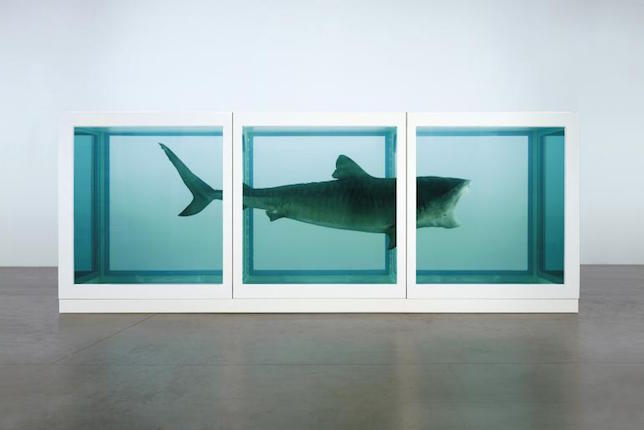 Damien Hirst The Physical Impossibility of Death in the Mind of Someone Living, 1991
Damien Hirst The Physical Impossibility of Death in the Mind of Someone Living, 1991
Now let's look at a piece by Damien Hirst titled "The Physical Impossibility of Death in the Mind of Someone Living." It's not your ordinary artwork —a shark preserved in formaldehyde is on display.
This artwork is well renowned for being divisive and has generated quite a stir in the art world. When the piece was sold in 2004, a replacement had to be made because it had been ordered by collector Charles Saatchi in 1991. Some even dispute whether it should be regarded as art due to its unusualness.
6. Cecily Brown, 1998, The Girl Who Had Everything
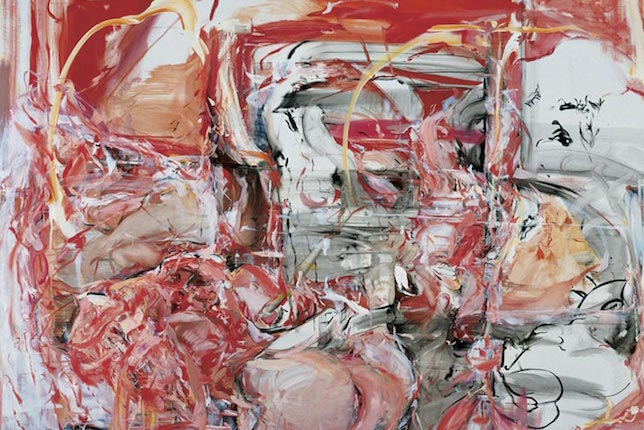 Cecily Brown, The Girl Who Had Everything, 1998
Cecily Brown, The Girl Who Had Everything, 1998
Introducing Cecily Brown, a British artist renowned for her beautifully textured modern paintings. Her aesthetic blends aspects of abstract expressionism and the baroque masters.
Her paintings feature a variety of hues and textures as well as characters and forms that allude to sexuality. These components stand in contrast to her work's abstract whirling patterns.
She doesn't use clear images; instead, she hints at shapes, asking people to look deeper into her art to find the sexual images hidden inside.
7. Yayoi Kusama, 1965, Infinity Mirror Room
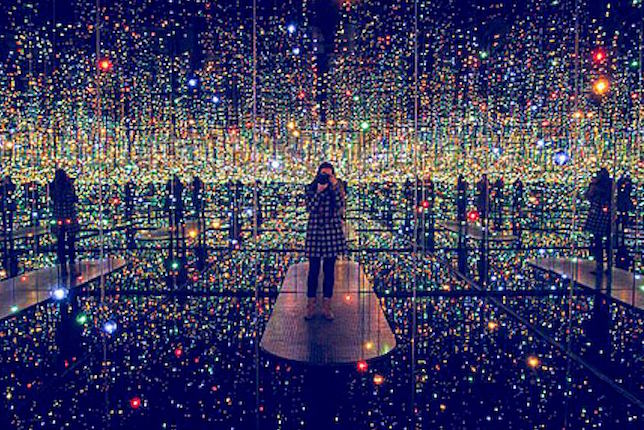 Yayoi Kusama, Infinity Mirror Room, 1965
Yayoi Kusama, Infinity Mirror Room, 1965
Yayoi Kusama, a Japanese artist, is well known for her exceptional and outlandish works of art. Her creations transport you to a surreal and psychedelic world. She creates a universe of limitless possibilities by combining patterns and repeating forms.
The "Infinity Mirror Room," an installation that submerges you in a world of seemingly limitless possibilities, is one of her amazing works. Kusama famously compared her existence to being "a pea lost among thousands of other peas," offering an insight into her unusual viewpoint.
8. Keith Haring, 1982, Untitled
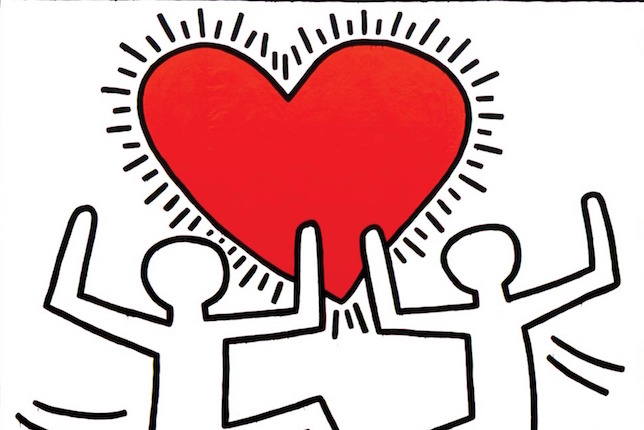 Keith Haring, Untitled, 1982
Keith Haring, Untitled, 1982
Discover Keith Haring's universe, where his creations capture the essence of Pop Art aesthetic. His designs are straightforward and bursting with vivid characters.
Haring started his career as a graffiti artist in the New York subway, and his signature figures and patterns rapidly made him famous. One symbol he often used was the heart.
At a period when these topics were stigmatized and cloaked in secrecy, he fearlessly confronted concerns relating to sexuality and AIDS via his work.
9. Jean-Michel Basquiat, 1981, Untitled
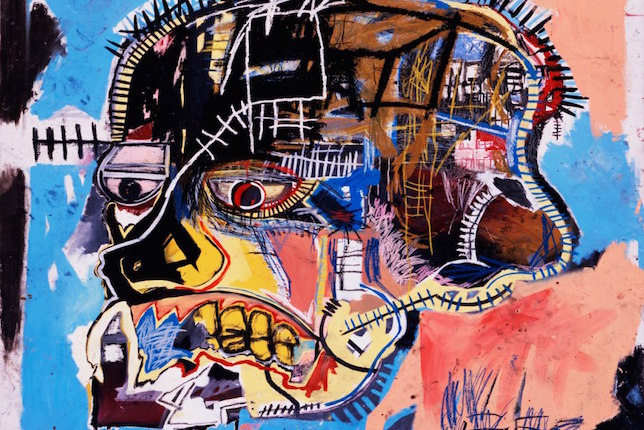 Jean-Michel Basquiat, Untitled, 1981
Jean-Michel Basquiat, Untitled, 1981
Behold this lively and energetic artwork created by Jean-Michel Basquiat when he was only 20. Art critics find it quite puzzling. It's sometimes referred to as "Skull" due to its face-like shape, but it leaves us with more questions than answers.
Is it showing a skull or a partially formed face? Does it symbolize life or death? Some even ponder if it's a self-portrait by the artist himself.
10. Jenny Saville, 1992, Propped
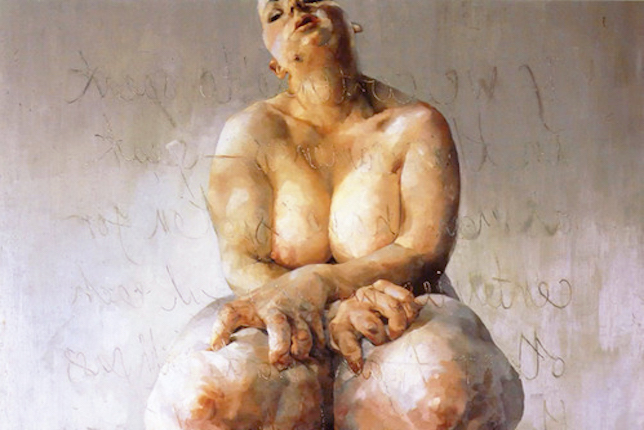 Jenny Saville, Propped, 1992
Jenny Saville, Propped, 1992
Jenny Saville's signature piece is a stunning self-portrait that started her career. Saville became well-known for her giant portraits, many of which are self-portraits of women who do not adhere to socially acceptable beauty ideals. But instead represent the vast variation of women's beauty.
Francis Bacon and Lucian Freud come to mind when seeing her unusual approach to oil paintings and warm flesh tones.
11. Banksy, 2002, Girl with Balloon
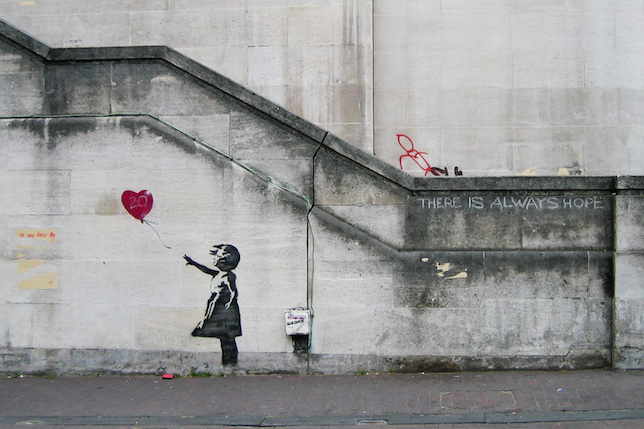
Banksy, Girl with Balloon, 2002
Our next artist is the famous street artist known for appearing on Waterloo Bridge in London, although the original artwork has since been painted over. This piece has been recreated several times to support various political causes, most notably during the Syrian refugee crisis in 2014.
In 2018, something remarkable happened. A framed copy of this artwork, sold at Sotheby's auction, was spontaneously shredded. It turns out Banksy had installed a secret device in the frame. The artwork was then given a new name, "Love is in the Bin." Astonishingly, the buyer decided to go ahead with the purchase despite the unexpected turn of events.
12. Tracey Emin, 1998, My Bed
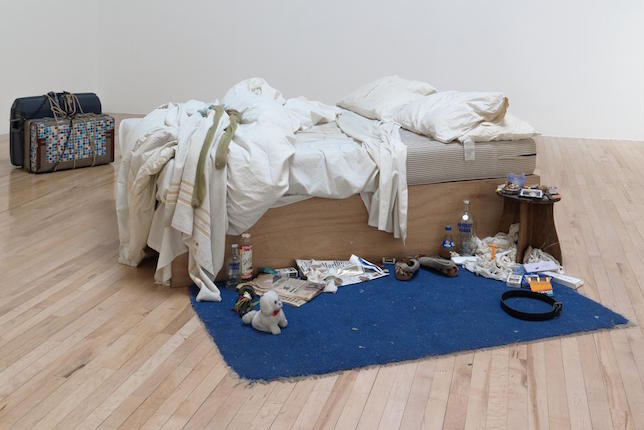 Tracey Emin, My Bed, 1998
Tracey Emin, My Bed, 1998
Let's take a closer look at "My Bed," which is exactly what it sounds like—a recreation of the artist's messy, unmade bed. As she grappled with complicated relationships and alcohol issues that brought her great sadness, Tracey Emin developed this concept in a tough time.
The disorderliness of her room hit her hard during a bleak chapter of life, but when she finally saw the light at the end of the tunnel, she decided to make art out of it.
Although it didn't win the Turner Prize, the fact that this piece was nominated ignited intense arguments about whether or not it could be considered art.
13. Roy Lichtenstein, 1961, Look Mickey
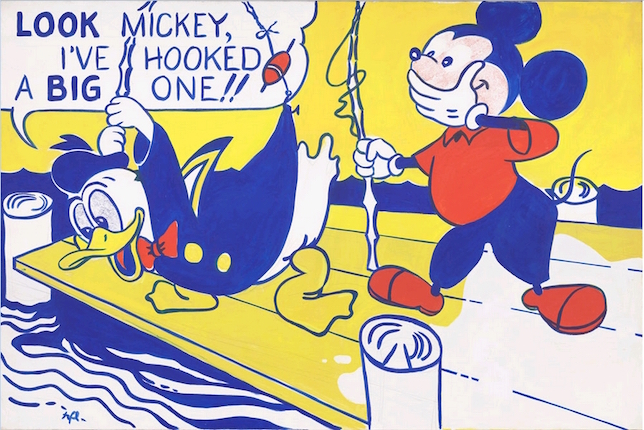 Roy Lichtenstein’s Look Mickey, 1961
Roy Lichtenstein’s Look Mickey, 1961
Let's talk about "Look Mickey," a pivotal point in Roy Lichtenstein's career. His representation of a pop culture scene for the first time was a critical turning point in developing his own artistic voice.
He recreated a situation from the past, right down to the speech bubble. Some people initially criticized this strategy for disrespecting the great arts.
But as time went on, people began to appreciate this distinctive style. Today, Lichtenstein is regarded as one of the founders of the Pop Art movement.
14. Takashi Murakami, 2002, Flower Ball
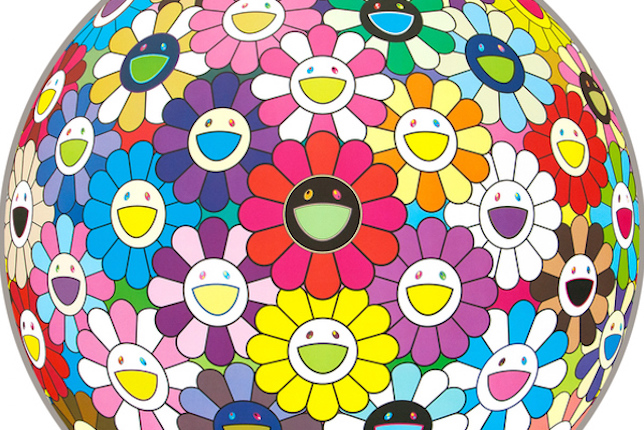
Takashi Murakami, Flower Ball, 2002
We will now go into the life of Takashi Murakami, an artist. He got his start in Nihonga, the Japanese art form of old, but became bored with its elitism. Back in the early 2000s, he came up with the phrase "superflat."
It's a way of describing the impact Japanese 2D art, particularly anime and manga, has had on the country's culture. But, it also reflects the postwar shifts in Japanese culture that the artist sought to reflect in his work.
15. David Hockney, 1972, Portrait of an Artist (Pool with Two Figures)
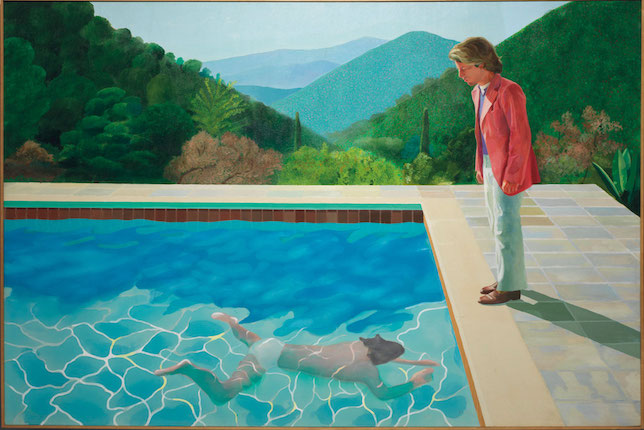 David Hockney, Portrait of an Artist (Pool with Two Figures), 1972
David Hockney, Portrait of an Artist (Pool with Two Figures), 1972
Now, we focus on "Portrait of an Artist," an extraordinary piece by David Hockney. This piece is considered the priciest artwork ever sold by a living artist at auction. It is genuinely legendary. Hockney used two staged images to create this piece.
Interestingly enough, the first draft was destroyed, but he kept going on. He came up with a new idea for it, and in 1972, he spent two weeks painting a second version that would go down in history.
16. Dorothea Tanning, 1984, Door 84
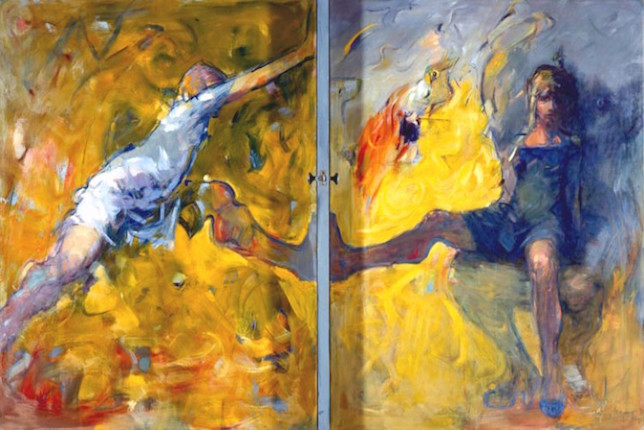 Dorothea Tanning, Door 84, 1984
Dorothea Tanning, Door 84, 1984
The direction of Surrealism art began to change with this piece by Dorothea Tanning. Realistic imagery gave way to more abstract ones. Tanning accomplished this using expressive, spirited brushstrokes and vibrant hues.
Oddly enough, it's not one of her most well-known works of art. Tanning gained popularity after putting out pieces like "Birthday" (1942) and "Eine Kleine Nachtmusik" (1943).
17. Jeff Koons, 1994, Balloon Dogs
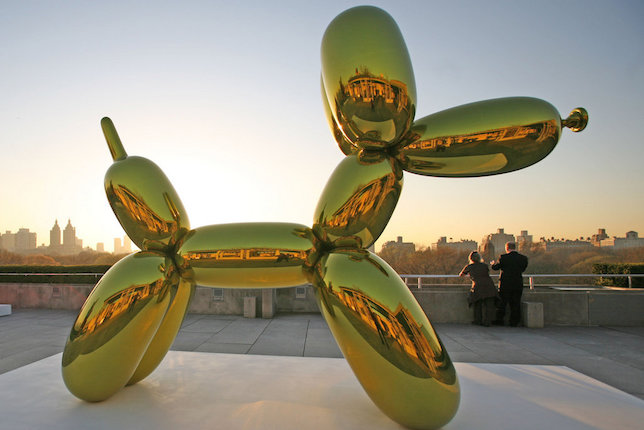 Jeff Koons, Balloon Dog, 1994
Jeff Koons, Balloon Dog, 1994
Jeff Koons, who once worked on Wall Street, generated a lot of discussion in the art community. He is out front about the fact that his work is purely decorative and contains no profound meaning.
Even more intriguing is the fact that he doesn't create his artwork by hand. Instead, he delegated it to a group of workers at a workshop. Some people ponder if what he does can be considered art due to these factors.
Shiny Balloon dogs are one aspect of his artwork that stands out. They are most likely his contemporary works' most well-known pieces.
18. Marc Chagall, 1964, ceiling of Paris Opéra Garnier
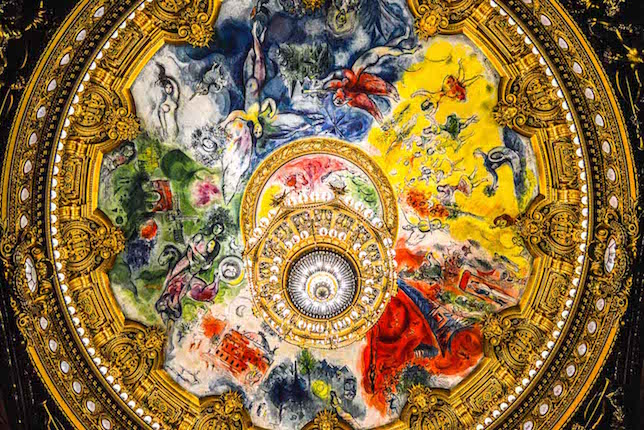 Marc Chagall, ceiling of Paris Opéra Garnier, 1964
Marc Chagall, ceiling of Paris Opéra Garnier, 1964
In Paris Opera Garnier, there's a very well-known ceiling, the work of Chagall. It's been a source of big arguments ever since it was made and unveiled in 1964.
In fact, they had to put the pieces together with soldiers guarding them. This colorful artwork shows that Chagall was indeed one of the great painters of our era. It's filled with nods to famous composers and artists from history.
19. Frida Kahlo, 1948, Self Portrait
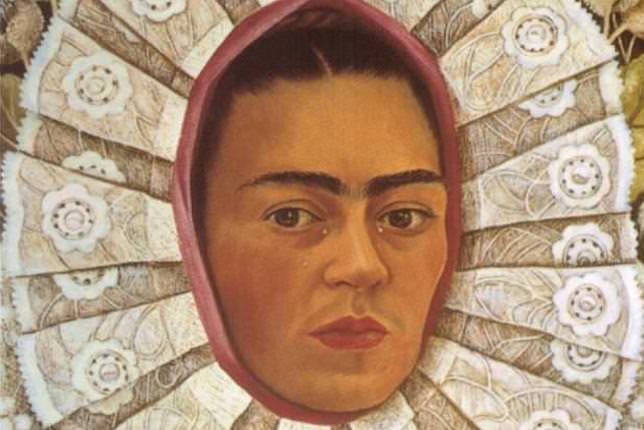 Frida Kahlo, Self Portrait, 1948
Frida Kahlo, Self Portrait, 1948
The very last piece of art that Frida Kahlo created was this striking self-portrait. Her health was deteriorating, so she was only able to produce this one piece of art in 1948.
Frida Kahlo wears indigenous clothing from Tehuana, Mexico, in this artwork. Unlike her customary backdrops of lush nature, she is wearing a beautiful collar over her face. Her expression conveys her intense emotions, and her face is stern. You can see the sorrow in her countenance.
20. Lucian Freud, 1985, Reflection
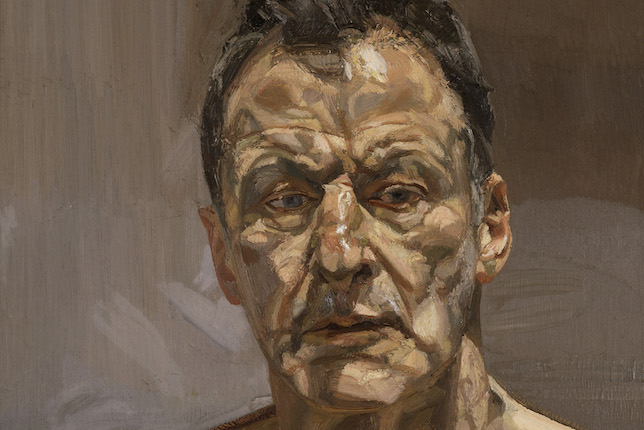 Lucian Freud, Reflection, 1985
Lucian Freud, Reflection, 1985
British artist Lucian Freud is well known for his portrait paintings. He is actually the renowned psychologist Sigmund Freud's grandson. He utilizes mirrors to create self-portraits while painting about himself.
This piece of art is a fantastic illustration of his technique. Every wrinkle and flaw in his skin and face are obvious. Many believe that he portrays his themes with brutal honesty, like a severe critic. He provides us with a window to see inside their worlds and thoughts.
21. Sophie Calle, 2007, Prenez soin de vous
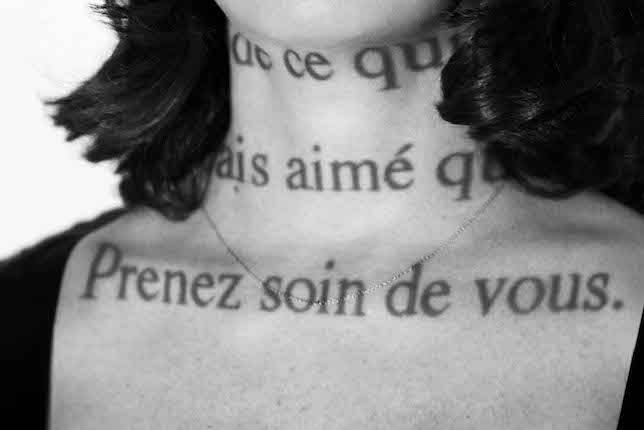 Sophie Calle, Prenez soin de vous, 2007
Sophie Calle, Prenez soin de vous, 2007
When Sophie Calle's boyfriend split up with her in 2007, he did it through email, concluding with the words "Take care of yourself."
A short while later, the artist sent this email to 107 women who excelled in their fields to grasp what he meant by those words in an email delivered to them. Their responses are pretty astounding. Some people carefully read the text. Some considered the legal implications. Others converted the message into dance interpretations. At the same time, the rest created a short film featuring a cockatoo eating the message.
All these different responses are brought together in this incredible look at relationships and how we can feel vulnerable in them.
22. Antony Gormley, 1998, Angel of the North
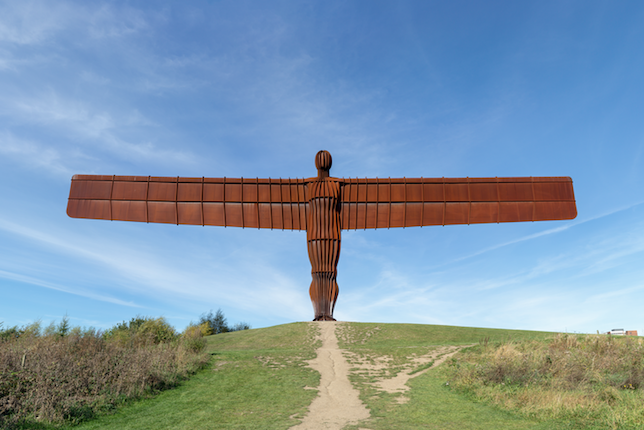 Antony Gormley, Angel of the North, 1998
Antony Gormley, Angel of the North, 1998
Anthony Gormley frequently uses his own body to create statues that resemble living beings. In Gateshead, United Kingdom, you may discover the Angel of the North, one of his most well-known pieces.
This statue cost roughly £800,000 and was constructed for four years. The wings appear to offer an embrace if you pay attention to how they are tilted inward. Additionally, the monument aims to convey the notion of time passing.
23. Ai Weiwei, 2009, Remembering
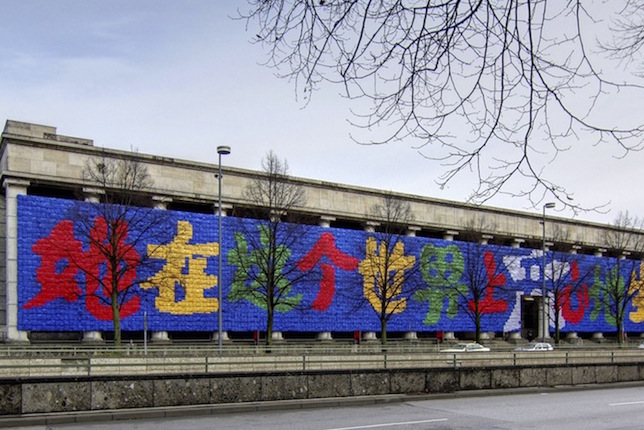 Ai Weiwei, Remembering, 2009
Ai Weiwei, Remembering, 2009
Chinese artist Ai Weiwei created this stirring sculpture to honor the kids who lost their lives in the devastating earthquake that struck Sichuan province in 2008. It was a catastrophic calamity when many schools were destroyed. Many children did not survive since the schools were not constructed properly.
Nine thousand student bags comprise this massive work of art. Looking carefully, you may notice Chinese lettering that reads, "She lived happily in this world for seven years." It's incredibly heartbreaking to hear these remarks from a mother who lost her kid.
24. Francis Bacon, 1969, Three Studies of Lucian Freud
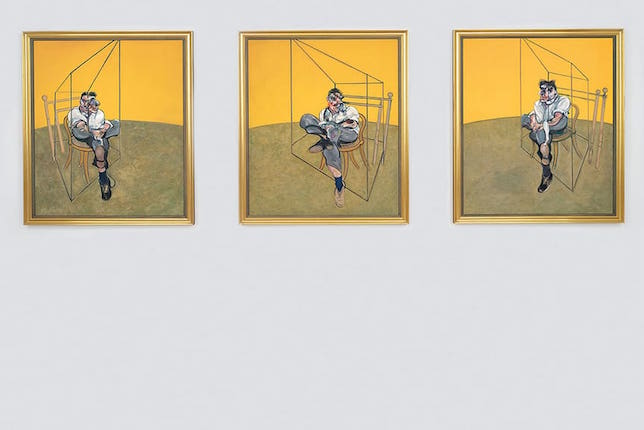 Francis Bacon, Three Studies of Lucian Freud, 1969
Francis Bacon, Three Studies of Lucian Freud, 1969
This triptych, sold in 2013, was the most expensive British artist’s artwork ever bought at auction. It depicts the artist's contemporary and adversary, Lucian Freud.
Francis Bacon, the artist, insisted the trio always be shown together. Still, it wasn't always the case. Over the years, these three paintings have had several distinct transfers of ownership.
25. Mark Rothko, 1961, Orange, Red, Yellow
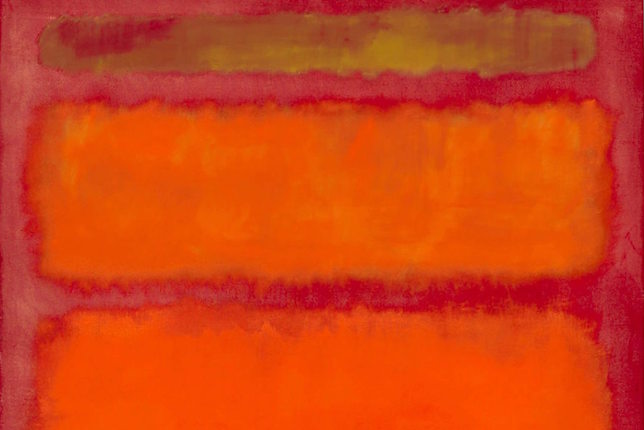 Mark Rothko, Orange, Red, Yellow, 1961
Mark Rothko, Orange, Red, Yellow, 1961
A painting titled "Orange, Red, Yellow" fetched a then-record sum at auction in 2012. Mark Rothko is known for his work that resembles abstract geometric forms and lines. Some adore his work, and others don't.
What's fascinating is that Rothko aimed for his massive works to have a human scale and intimacy. He suggested a distance of sixty feet from his paintings in order to fully appreciate the intimate bond between viewer and work. The purpose of art is to bring people closer together and make them feel unique.
Ready to Explore More Contemporary Art?
Learning about these well-known contemporary works of art, remember there are many more to explore.
Check out Artsper's selection of modern artwork, which includes works by both established and emerging artists. There is always something intriguing and novel to discover.
No Comments Yet...